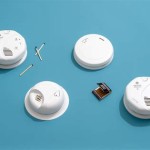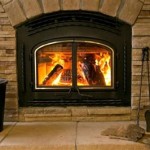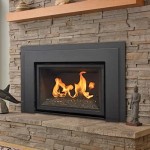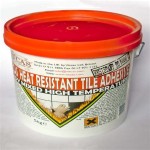Smoke Guard Fireplace: Ensuring Safety and Efficiency
Fireplaces offer warmth, ambiance, and a focal point for homes. However, traditional fireplaces can also present safety concerns related to smoke leakage and energy inefficiency. Smoke guards, also known as fireplace draft guards or smoke deflectors, are designed to mitigate these problems, enhancing the overall fireplace experience. The function of a smoke guard is to prevent downdrafts, reduce smoke spillage into the room, and improve fireplace efficiency.
This article will delve into the various aspects of smoke guards, including their benefits, types, installation, maintenance, and factors to consider when selecting the ideal smoke guard for a fireplace. Understanding the role and proper utilization of these devices is crucial for maximizing fireplace safety and performance.
Understanding the Benefits of a Smoke Guard
Smoke guards provide a range of benefits that contribute to a safer and more efficient fireplace operation. The primary advantages include preventing downdrafts, reducing smoke spillage, and improving overall efficiency. These improvements translate to a more comfortable and enjoyable experience for homeowners using their fireplaces.
Downdrafts occur when cold air from outside flows down the chimney, pushing smoke back into the room. A smoke guard deflects this downdraft, preventing smoke from entering the living space. This is particularly important during periods of high wind or when negative pressure is present within the home. Negative pressure can be caused by running exhaust fans, clothes dryers, or other appliances that draw air out of the house.
By preventing downdrafts and improving airflow, smoke guards minimize the risk of smoke spillage. Smoke spillage not only creates an unpleasant odor but also poses potential health hazards. Smoke contains particulate matter, carbon monoxide, and other harmful substances that can irritate the respiratory system and exacerbate existing health conditions. Proper deflection ensures that these substances are channeled up the chimney and released outside the home.
Furthermore, smoke guards contribute to improved fireplace efficiency. By creating a more consistent and controlled draft, the fireplace burns fuel more completely and effectively. This reduces the amount of fuel required to generate the desired heat output, leading to cost savings and environmental benefits. A well-functioning smoke guard helps maintain a steady flow of air, optimizing the combustion process and minimizing energy waste.
Types of Smoke Guards Available
Several different types of smoke guards are available on the market, each designed to address specific fireplace configurations and needs. The selection process should consider the fireplace’s size, shape, and existing damper system. Common types include adjustable smoke guards, fixed smoke guards, and top-mounted chimney caps with smoke guard features.
Adjustable smoke guards offer versatility and customization. These guards typically consist of a metal plate or barrier that can be adjusted to different angles and positions. This adjustability allows homeowners to fine-tune the airflow and optimize the smoke deflection based on prevailing wind conditions and fireplace usage. Adjustable models are particularly useful in areas with variable weather patterns or homes with unique chimney configurations.
Fixed smoke guards provide a more permanent solution. These guards are typically custom-made to fit the specific dimensions of the fireplace opening. Fixed guards offer a consistent level of protection against downdrafts and smoke spillage. They are often preferred for fireplaces that are used frequently and require a reliable and low-maintenance solution.
Top-mounted chimney caps with smoke guard features combine the benefits of a chimney cap and a smoke guard. These caps prevent rain, snow, and debris from entering the chimney while also deflecting downdrafts and improving airflow. They are installed at the top of the chimney flue and offer comprehensive protection for the entire fireplace system. Chimney caps with integrated smoke guards are a popular choice for homeowners seeking a complete and durable solution.
In addition to these primary types, other variations exist, such as angled smoke shelves and custom-designed deflectors. Angled smoke shelves are installed inside the firebox, directing smoke towards the chimney flue. Custom-designed deflectors are tailored to address specific challenges related to fireplace draft and smoke spillage. Consulting with a qualified fireplace professional can help determine the most appropriate type of smoke guard for a particular fireplace system.
Installation and Maintenance of Smoke Guards
Proper installation and maintenance are essential for ensuring the effectiveness and longevity of a smoke guard. Installation procedures vary depending on the type of smoke guard selected. Some smoke guards can be installed by homeowners, while others require professional installation. Regular maintenance, including cleaning and inspection, is necessary to keep the smoke guard functioning optimally.
Adjustable smoke guards often come with straightforward installation instructions. They typically involve attaching the guard to the fireplace opening using screws or brackets. It is important to ensure that the guard is securely fastened and properly aligned to maximize its effectiveness. The adjustment mechanism should be tested to ensure smooth and reliable operation.
Fixed smoke guards and top-mounted chimney caps typically require professional installation. A qualified fireplace technician can accurately measure the fireplace opening or chimney flue and custom-fit the smoke guard to ensure a proper seal. Professional installation guarantees that the smoke guard is installed correctly and safely, minimizing the risk of improper function or damage to the fireplace system.
Regular maintenance of a smoke guard involves cleaning and inspection. Over time, soot, creosote, and other debris can accumulate on the surface of the smoke guard, reducing its effectiveness. Cleaning the smoke guard regularly helps maintain proper airflow and prevent buildup that could pose a fire hazard. The frequency of cleaning depends on the frequency of fireplace use and the type of fuel burned.
Inspection of the smoke guard should be conducted annually. This involves checking for signs of damage, such as cracks, rust, or loose fasteners. Any damaged components should be repaired or replaced promptly to ensure the continued functionality of the smoke guard. Professional fireplace inspections can help identify potential problems and ensure that the entire fireplace system is operating safely and efficiently.
Factors to Consider When Choosing a Smoke Guard
Selecting the appropriate smoke guard for a fireplace involves considering several factors, including fireplace size and design, chimney height and construction, local climate conditions, and budget constraints. Assessing these factors helps ensure that the chosen smoke guard effectively addresses the specific needs and challenges of the fireplace system.
The size and design of the fireplace opening are critical considerations. The smoke guard should be appropriately sized to cover the opening and prevent downdrafts from entering the room. Custom-fitted smoke guards are often the best option for fireplaces with unusual dimensions or configurations. The design of the firebox and the location of the damper can also influence the choice of smoke guard.
Chimney height and construction play a significant role in fireplace draft. Taller chimneys generally create a stronger draft, while shorter chimneys may be more susceptible to downdrafts. The condition of the chimney, including cracks, obstructions, or inadequate insulation, can also affect fireplace performance. A smoke guard can help compensate for deficiencies in chimney design or construction.
Local climate conditions, particularly wind patterns and temperature fluctuations, can influence the severity of downdrafts and smoke spillage. In areas with frequent high winds, a top-mounted chimney cap with smoke guard features may be the most effective solution. In regions with significant temperature variations, an adjustable smoke guard can provide flexibility to adapt to changing conditions.
Budget constraints are always a factor in any home improvement project. Smoke guards range in price from relatively inexpensive adjustable models to more costly custom-fitted or top-mounted options. It is important to balance the cost of the smoke guard with its potential benefits in terms of safety, efficiency, and convenience. Investing in a high-quality smoke guard can provide long-term value by reducing fuel consumption, minimizing maintenance costs, and enhancing the overall fireplace experience.
Ultimately, the selection of a smoke guard should be based on a thorough assessment of the fireplace system and the specific needs of the homeowner. Consulting with a qualified fireplace professional can provide valuable guidance and ensure that the chosen smoke guard is the best fit for the particular application. A properly installed and maintained smoke guard can significantly improve the safety, efficiency, and enjoyment of a fireplace.

Smoke Guards Dr Sweep

Hy C Fireplace Smoke Guard 4 Brass Plated Diy Chimney And

Smoke Guards Frontier Fireplaces

Fireplace Accessories Full Service Chimney

Smokeguard For Fireplaces Eliminate Fireplace Smoke

Perpetua Iron Firescreens

Brass Fireplace Smoke Guard 1289 Miscellaneous Hearth Accessories Fireplaces Will Often

Why Does My Fireplace Smoke

Perpetua Iron Firescreens

Why Does My Fireplace Smoke And What Can Be Done About It We Love Fire
Related Posts








